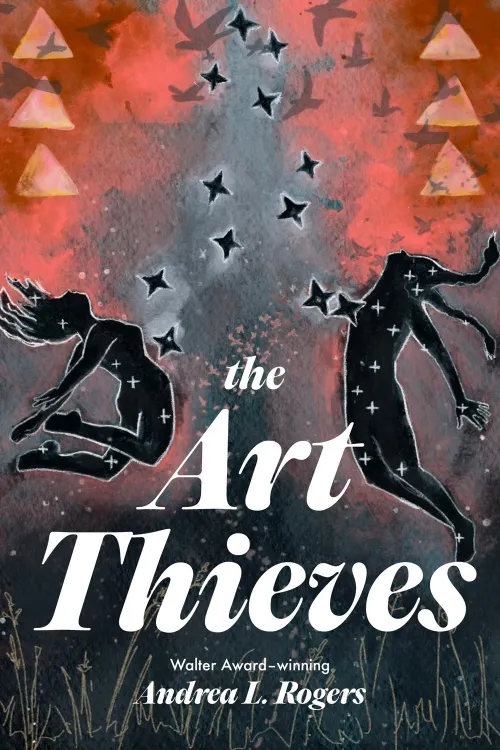Share this Book
In The Art Thieves, art is seen as so crucial to hope in human survival and thriving that time travelers make it a priority to return to the past to bring art to the future. Have students explore how art can help people today and in the future, and challenge them to consider what role their own creative work might play in shaping or preserving meaning for what comes next for the human race.
Ask students to consider the reasons why Adam travels back in time to steal Martin Puryear’s Ladder for Booker T. Washington. What does this piece of art represent? What social constructs make it relevant? What does it communicate to them? What could it mean in the future? Encourage students to engage with both the historical and symbolic dimensions of the work, and to think about why future generations find this sculpture worth saving.
Now have them move beyond interpreting art to become creators. Following Stevie’s example, have students use photography to take images that they feel offer inspiration or hope. Ask them to consider how their perspective—both literally, through camera angles and composition, and metaphorically, through the subject matter they choose—can offer insight into why their image is worth seeing, remembering, and saving for future generations.
Once the photographs are completed, have students present them in a gallery-style classroom exhibit or digital showcase, accompanied by brief artist statements that explain the visual choices they made and the ideas the images carry. Then have students work together to combine their photographs into one collage on the same theme of inspiration and hope. Have them discuss ideas, placement of elements, and overall vision for the collage and develop a new artist statement. The class may reflect together on the power of both individual and collective visual storytelling and how today’s creative expressions might one day serve as artifacts of memory, struggle, or hope for future generations.
Questions for Discussion or Reflective Writing
- When reflecting on Martin Puryear’s Ladder for Booker T. Washington, what does Stevie mean by “art was in conversation with the world”? How do you see art as being connected to the human experience? How does The Art Thieves portray the value of art? Why are characters willing to risk everything to reclaim or protect it?
- How does the novel challenge the idea that art belongs in museums? Do you think art can survive without people to interpret and care for it? Why are characters willing to risk everything to reclaim or protect art? What role does art play in resisting erasure or injustice?
- What responsibility do museums have to return stolen or sacred Indigenous items? How do Stevie’s experiences at the museum make her question who benefits from these collections? How would you feel if something sacred to your community were on display for strangers?
- What role does music play in the novel? Why does Stevie prefer vinyl? How does music preserve personal and cultural identity?
- Why is Stevie’s mother so focused on preparing for an apocalpse? What does she mean by “Indigenous people and people with roots in Africa [are] post-apocalyptic populations”?
- What is your understanding of Futurism? Do you see any connections or influences between Futurism, Afrofuturism, and Cherokee Futurism? If so, what are they? As a genre, how is Cherokee Futurism different from science fiction?
- What call to action did you hear in this book? How will you answer?
Related Resources
Ladder for Booker T. Washington from the Collection of the Modern Art Museum of Fort Worth
Martin Puryear's Ladder for Booker T. Washington lesson plan from EDSITEment
More Titles to Try
Stay on top of current education news


